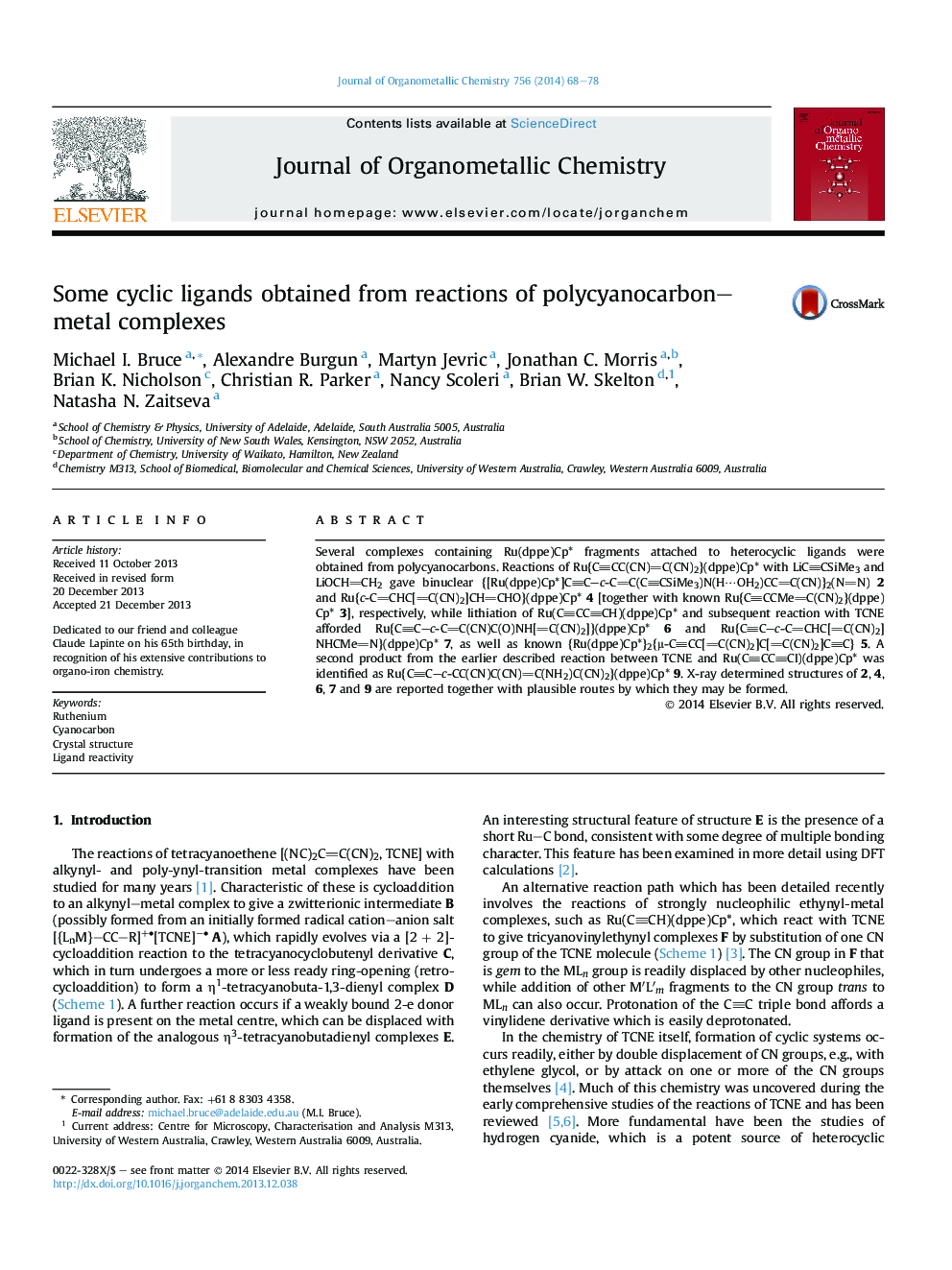| کد مقاله | کد نشریه | سال انتشار | مقاله انگلیسی | نسخه تمام متن |
|---|---|---|---|---|
| 1324078 | 1499884 | 2014 | 11 صفحه PDF | دانلود رایگان |
• Syntheses of Ru(dppe)Cp* complexes containing heterocyclic ligands, formed by attack on CN groups of cyanocarbons.
• X-ray structural identification of a dimeric azopyrrole, a dicyanomethylene–pyran and other nitrogen heterocycles.
• Iodination of a lithiated diynyl–Ru complex and reaction with TCNE gave a pentasubstituted cyclopentadienyl–ethynyl ligand.
Several complexes containing Ru(dppe)Cp* fragments attached to heterocyclic ligands were obtained from polycyanocarbons. Reactions of Ru{CCC(CN)C(CN)2}(dppe)Cp* with LiCCSiMe3 and LiOCHCH2 gave binuclear {[Ru(dppe)Cp*]CC–c-CC(CCSiMe3)N(H⋯OH2)CCC(CN)}2(NN) 2 and Ru{c-CCHC[C(CN)2]CHCHO}(dppe)Cp* 4 [together with known Ru{CCCMeC(CN)2}(dppe)Cp* 3], respectively, while lithiation of Ru(CCCCH)(dppe)Cp* and subsequent reaction with TCNE afforded Ru{CC–c-CC(CN)C(O)NH[C(CN)2]}(dppe)Cp* 6 and Ru{CC–c-CCHC[C(CN)2]NHCMeN}(dppe)Cp* 7, as well as known {Ru(dppe)Cp*}2{μ-CCC[C(CN)2]C[C(CN)2]CC} 5. A second product from the earlier described reaction between TCNE and Ru(CCCCI)(dppe)Cp* was identified as Ru{CC–c-CC(CN)C(CN)C(NH2)C(CN)2}(dppe)Cp* 9. X-ray determined structures of 2, 4, 6, 7 and 9 are reported together with plausible routes by which they may be formed.
Several complexes containing Ru(dppe)Cp* fragments attached to heterocyclic ligands were obtained from polycyanocarbons by several reactions involving nucleophilic attack of (i) alkynyl anions or (ii) water, followed by intramolecular cyclisations.Figure optionsDownload as PowerPoint slide
Journal: Journal of Organometallic Chemistry - Volume 756, 15 April 2014, Pages 68–78
